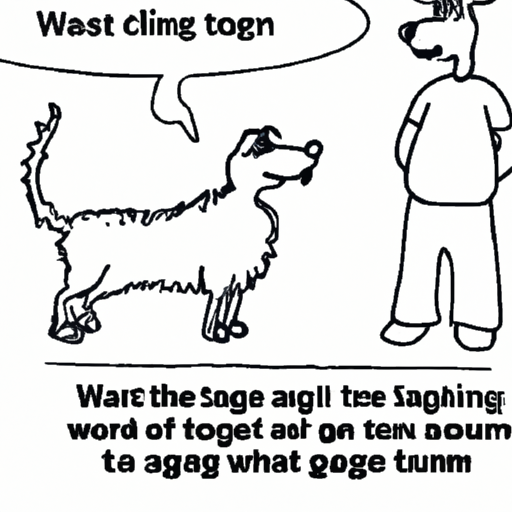You’ve probably seen a dog wagging its tail and thought it was simply a sign of happiness. However, the wag of a dog’s tail is far more complex than that. It’s a sophisticated means of communication that can express a range of emotions and intentions. Let’s delve into the heart of this subject and decipher the nuances of a dog’s tail wagging.
- Table of Contents:
- The Science Behind Tail Wagging
- Decoding Tail Wagging: What Does It Mean?
- Tail Wagging and Dog Breeds
- Misconceptions About Tail Wagging
- Tips for Interpreting Tail Wagging
-
Frequently Asked Questions
-
Key Takeaways:
- Tail wagging is a complex form of canine communication.
- Different movements and positions of the tail signify different emotions.
- Understanding tail wagging can improve the human-dog relationship.
The Science Behind Tail Wagging
Believe it or not, the wagging of a dog’s tail is a calculated action triggered by their central nervous system. According to a study published in Current Biology, the direction and speed of a dog’s tail wag can convey their emotional state^1^. The left or right movement of the tail is controlled by the opposite brain hemisphere. This means that when a dog feels positive emotions, its tail tends to wag more to its right side (your left when facing the dog), and vice versa.
Decoding Tail Wagging: What Does It Mean?
A dog’s tail wagging can mean a variety of things depending on the speed, direction, and position of the tail. Here’s a simple guide to help you understand better:
- Broad and fast wag: This is generally a sign of happiness or excitement.
- Slow wag with tail at half-mast: The dog is unsure or assessing the situation.
- Vigorous wag with tail straight up: This is a sign of aggression or dominance.
- Low wag or tail between legs: The dog is scared or submissive.
A deeper analysis of these signals can be found in this article on dog body language.
Tail Wagging and Dog Breeds
Different dog breeds have different tail shapes and sizes, which can affect how they wag their tails. For example, breeds like Greyhounds have thin, whip-like tails, while breeds like Pugs have curled tails. These physical differences can modify the way dogs express their emotions through tail wagging. It’s crucial to understand the breed-specific traits to interpret their tail language correctly. You can find more about breed-specific behaviors here.
Misconceptions About Tail Wagging
One common misconception is that a wagging tail always means a happy dog. This is not true. As we’ve discussed, a tail wag can express a variety of emotions, from happiness to fear to aggression. Another misconception is that cats wag their tails for the same reasons as dogs. However, a wagging tail in a cat often signifies irritation or aggression. More about these common misconceptions can be found here.
Tips for Interpreting Tail Wagging
Interpreting a dog’s tail wagging can improve your relationship with dogs and prevent misunderstandings. Here are some tips:
- Observe the entire body: A dog’s tail is just one part of their communication. It’s crucial also to observe their ears, eyes, and body posture.
- Know the breed: Understanding breed-specific behaviors can help interpret tail wagging accurately.
- Consider the situation: The context in which a dog wags its tail can provide clues about what they’re trying to communicate.
Frequently Asked Questions
Q1: Does a wagging tail always mean a dog is happy?
No, a wagging tail doesn’t always mean a dog is happy. It can express a variety of emotions, from happiness to fear to aggression.
Q2: Do all dogs wag their tails?
Most dogs wag their tails, but the way they wag them can vary depending on the breed.
Q3: Can cats wag their tail like dogs?
Cats do wag their tails, but not for the same reasons as dogs. Often, a wagging tail in a cat signifies irritation or aggression.
Understanding a dog’s tail wagging is a fascinating and essential part of canine communication. By learning to interpret these signals, we can strengthen our bond with our four-legged friends and meet their needs more effectively.



